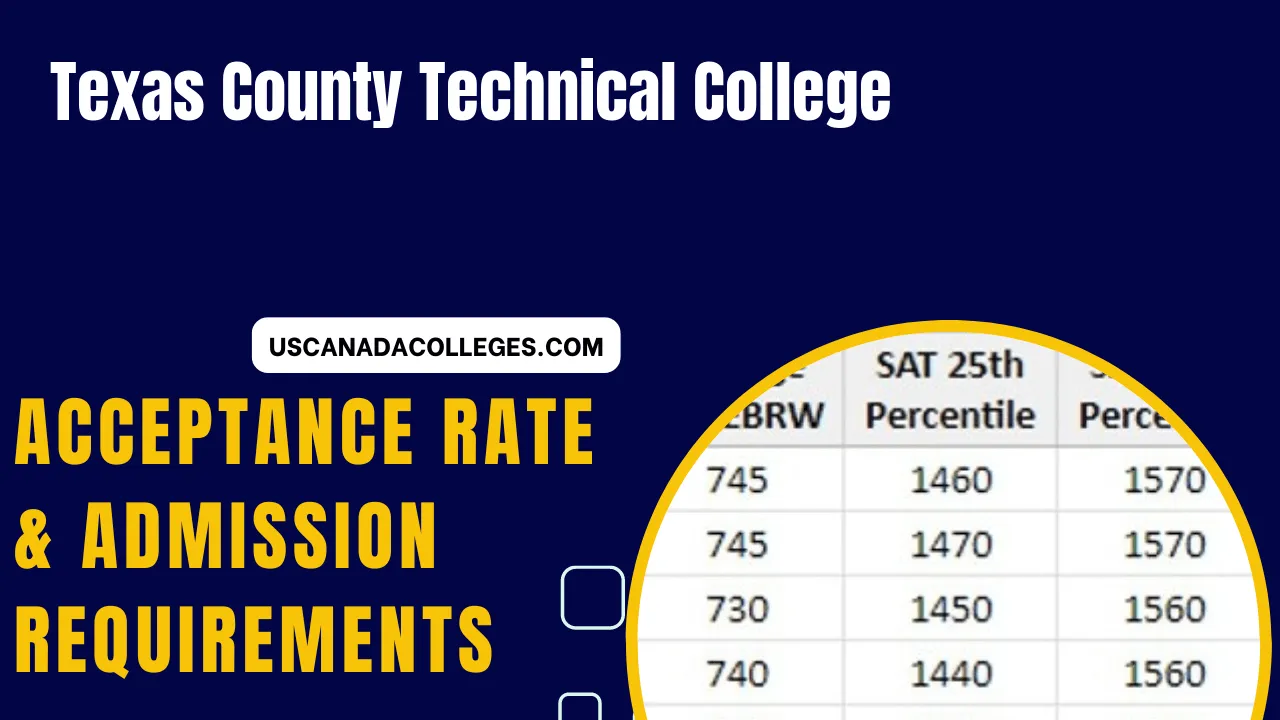Texas County Technical College is not selective in its admission process. The acceptance rate of Texas County Technical College (Bolivar Technical College) is 100%. This means that all applicants are admitted.
How Competitive are Texas County Technical College Admissions?
- Not Competitive: Applicants with satisfactory academics can easily secure admission.
- A holistic review considers essays, recommendations, and leadership roles.

However, a 100% acceptance rate or open admission policy does not guarantee admission. Every institution has minimum eligibility criteria. If you meet these conditions, then you can be certain of admission. Additionally, to secure admission, you must convince the admission staff that you are mentally and physically fit for the course of studies.
Texas County Technical College Admission Requirements
Can I Get Into Bolivar Technical College Without SAT Or ACT?: Texas County Technical College does not require admission test scores (SAT/ACT) during the application process and does not recommend that students provide these scores. But it is better to submit the test score if you have performed well in the test. It gives an extra opportunity to showcase your skills and competencies and hence will improve your chances of admission. Check the schedule of the test and plan accordingly. It is advisable to appear multiple times in the test unless you score well above the average SAT / ACT score of the admitted students, as given below. Normally, students may appear in the test 4 to 5 times to improve their scores. But if your score is not up to the mark and is less than the national or state average, then it is better not to submit the score as it will impact negatively.
Texas County Technical College (Bolivar Technical College) SAT Requirements
Each school has different requirements for SAT and ACT testing. Only a few schools require the SAT or ACT, but many consider your scores if you choose to submit them. The test score policy is already mentioned.
Bolivar Technical College Profile
Name: Texas County Technical College (Bolivar Technical College)
City: Houston
State: Missouri
Type: Private for Profit
Zip: 65483
Campus: Main
Accredited by: Accrediting Bureau of Health Education Schools (ABHES)
How much does a degree from Bolivar Technical College Cost?
The average annual cost of the degree at Texas County Technical College is USD: 29895. As most of the students receive Pell Grants and Federal Grants the average annual net price a student has to pay at Texas County Technical College is much less than this.
How can I get a scholarship?
70.91% of the students are receiving Pell Grant and 74.55 percent are receiving Federal Grants. So it is a better choice to go to Bolivar Technical College and apply for PELL or federal loan grants.
At Texas County Technical College, you will have no problem receiving any scholarship from the federal government. Fill in the FAFSA application form at the earliest and enlist Bolivar Technical College as your choice in the form.
How much a Bolivar Technical College Graduate make?
The average annual salary of the Bolivar Technical College graduate after 4-6 years of graduation is USD 40843. An average Bolivar Technical College graduate makes this much after 10 years of enrollment (4-6 years after graduation).
The average annual income of a graduate in the United States is USD: 40595
Degree Programs
Associate Degree Programs
- Allied Health and Medical Assisting Services
- Business Administration, Management and Operations
- Practical Nursing, Vocational Nursing and Nursing Assistants
- Registered Nursing, Nursing Administration, Nursing Research and Clinical Nursin
UG Certificate or Diploma Programs
- Allied Health and Medical Assisting Services
- Practical Nursing, Vocational Nursing and Nursing Assistants
- Registered Nursing, Nursing Administration, Nursing Research and Clinical Nursin
Full list of All degree programs offered by Texas County Technical College.
Data on this page is sourced from IPEDS, College Scorecard's latest data as provided in 2024, US Department of Education's latest 2024 statistics, Institute's official websites and printed material as well as additional publicly available sources.
